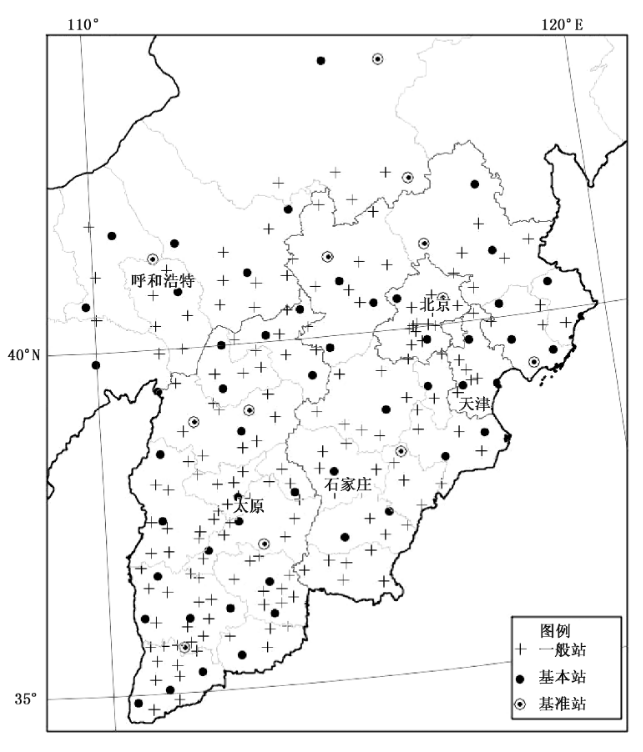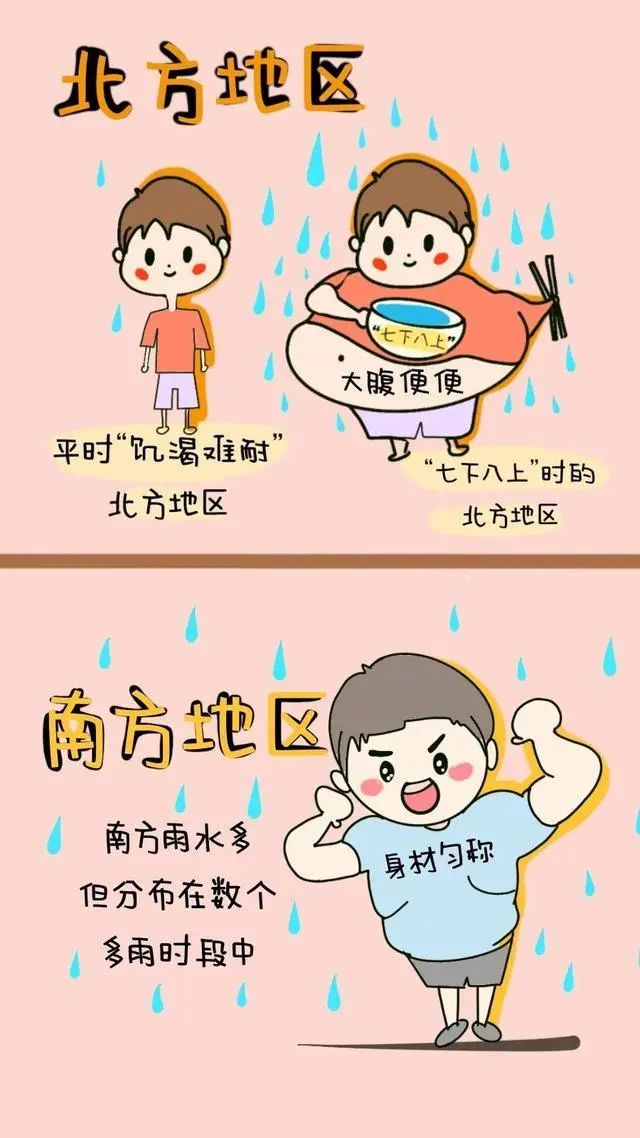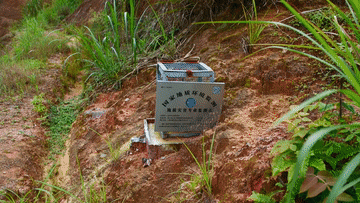What is "seven or eight"?What exactly is "North China Rainy Season"?
Author:China Meteorological Administr Time:2022.07.20

Currently, my country has entered
The key period of "seven below and eight" flood prevention
Seven or eight?
Are you sure you are not wrong?
Isn't it "seven up and eight below"? Intersection Intersection

That's right!
The "seven below and eight" mentioned here refers to
From the second half of July to the first half of August each year
North China and Northeast my country in China
The most concentrated period of precipitation

Compared with the south
"Seven or Eight Up and Eight" stage
Northern rainy season, flood conditions
What are the characteristics?
How should I deal with it?
What is the climate trend of "seven or eight" this year?
The rainy season in North China is 5 days earlier!
From the second half of July to August each year, it is one of the important stages of my country's main flood season, referred to as "seven or eight". During this period, the Western Pacific subtropical high pressure reached the northernmost position of the year. Affected by this, the north entered the main rainy season.
According to the monitoring of the National Climate Center, the rainy season of this year began on July 13th, 5 days earlier than usual.
According to the National Meteorological Industry Standard "China Rain Season Monitoring Index North China Rain Season" (QX/T 495-2019), the start time of the rainy season in North China mainly considers the location of the Northwest Pacific subtropical high-pressure ridge line, regional precipitation and compliance with the standards.

The distribution map of the North China Rain Season Monitoring Station. The monitoring area is divided into the Beijing -Tianjin -Hebei monitoring area, Jin monitoring area, and Inner Mongolia monitoring area
How is the start time of the rainy season in North China?
Starting date of the rainy season in single station:
Since July 1st, when the average northwest Pacific subtropical high -pressure ridge line is located on the 5th, when the position of the north of 25 ° N:
a) Beijing -Tianjin -Hebei and Jin Monitoring Area: Sliding accumulated precipitation during a certain station on 5 days is not less than 35 mm, and at least one day within 5 days of the daily precipitation of not less than 10 mm, the first daily precipitation is not less than 10 mm. Starting day for the rainy season for the station.
b) Inner Mongolia Monitoring Area: Sliding accumulation of precipitation during a certain station on 5 days is not less than 25 mm, and at least one day within 5 days of the daily precipitation is not less than 10 mm, the date with a daily precipitation of not less than 10 mm is the rainy season of the station. Starting day.
Date of starting rainy season:
When the cumulative proportion of the stations in the rainy season in the partition reaches or exceeds the proportion threshold corresponding to the partition, the day is set as the starting date of the partition rainy season.

The beginning of the rainy season in North China:
Among the three districts of Beijing -Tianjin, Hebei, Jin, Jin, and Inner Mongolia, the starting day of the rainy season in the rainy season of the rainy season is the beginning of the rainy season in North China.
According to statistics from the National Climate Center, from 2000 to 2021, the year of the rainy season in North China was significantly earlier: 6 years: 2000 (July 6), 2008 (July 15), 2012 (July 9) , 2013 (July 9), 2018 (July 9) and 2021 (July 12).
The rain of "seven or eight" is a bit "violent"!
One month's rainfall can account for 30 % of the year
The "seven or eight" rainy season generally applies to the northern regions of my country, such as North China, Huanghuai, Northeast, and Shaanxi, Ganshan, and Ning in the Loess Plateau.
The rain distribution of rainfall in the northern flood season, the heavy rain intensity is strong and aggressive. During the "seven or eight" periods, the northern region reached the maximum peak of rainfall. In just one month, rainfall in the northern region will account for about one -third of the year rainfall.
Compared with the south, the rainy season in the north seems to span more than 20 days, but it is not the kind of rainfall of "dragging water" all day. Although there are many rain in the south, it is distributed in several rain. The north is usually "hunger and thirst", and finally wait for the rainy season to eat "full meal". It should be noted that the northern is slightly weaker than the south.

During the period of "seven or eight", the precipitation weather in northern my country, especially North China and Northeast China, has increased significantly, and this period has also become the most concentrated time period in the northern flood disaster.
The "blessing" role of the terrain cannot be underestimated
Around late July, the north edge of the summer wind was advanced to North China. At the same time, the northwest Pacific subtropical high -pressure ridge line was lifted north to 30 ° north latitude. Delivered north to provide sufficient water vapor conditions for North China.
Once these warm and humid air currents meet the cold air that moved to the east, it is easy to form a strong precipitation.
Entering the "seven below and eight upper", the sub -height and warm and humid airflow gradually moved to the north region. Once you meet the cold air in the south, it will easily bring rainfall to the northern region.
Because North China is located in the mid -latitude temperate monsoon area, the heavy rain season is concentrated in summer, and the influence of special terrain (Taihang Mountains and Luliang Mountains) has the characteristics of concentrated time, strong strength, and heavy disasters.

The Taihang Mountains moved north and south to the central part of North China. It is a natural division line between the Loess Plateau and the North China Plain in the eastern region. It has an important impact on the weather system in North China, especially heavy rain. Compared with the middle and lower reaches of the Yangtze River, the impact of the rising impact of water vapor and warm and humid air on the mountains is even more obvious.
What is "seven or eight"?
Meteorological experts remind that compared with the Southern Basin, the northern basin has a concentrated rainfall and strong intensity. Flood prevention facilities and experience are lacking than the south, and they need to pay close attention.
There are people with travel plans, especially those who choose to travel by car, should pay attention to preventing water accumulation, and tourists who play in the wild should pay special attention to prevent lightning. It is particularly noteworthy that during the frequent period of geological disasters of mountain floods, you should try to avoid going to the mountainous areas.

During the summer vacation, "seven below and eight" is also the peak tourist season. It is recommended that tourists should check the destination weather forecast before travel, and always pay attention to receiving early warning information released by the local meteorological department, and arrange travel reasonably. What is the climate of "seven or eight" this year?
The National Climate Center predicts that during the "seven or eight ups and downs" this year, the rainyst areas in my country are mainly located in Northeast, eastern Inner Mongolia, eastern North China, central East China and central China, northern China, western South China, southern parts of the southwest, and southeast of Tibet. The regional precipitation is close to the same period of the year to less.
During the period of "seven or eight", the main rain belt of the eastern part of my country showed the characteristics of the staged changes in the first south. In the second half of July, the main rain belt was located in central and northern China, northern, central and northern, and southwest. In the first half of August, the main rain belt will be lifted north to northern China, northern Central China and North China.
During the "seven or eight" period in 2022, meteorological disaster forecast distribution map

In terms of the basin, during the period of "seven or eight", the precipitation of the Songhua River and the Nenjiang River Basin and the Huaihe River Basin is significantly more than the same period of the same year. When there are more, we need to pay attention to the local flood disasters that may bring in the staged water downside process; the downstream precipitation of the Yellow River Basin is too much, and the middle reaches are close to the same period to the same period to less, and the upstream and lower reaches of the Yangtze River Basin are too much. It is close to the same period of the year to less; the precipitation of the Pearl River Basin is generally close to the same period to the same period, but it needs to prevent the impact of wind and rain and staged floods caused by the typhoon; the precipitation of the Taihu Basin is slightly more than the same period of the same year.
Produced by China Meteorological Administration Xuanke Center (China Meteorological News Agency)
Source: China Meteorological Daily National Meteorological Industry Standard "China Rain Season Monitoring Index North China Rain Season" (QX/T 495-2019)
Hand -painted: Xie Jingxin
Edit: Brush
Review: Jiang Hong Duan Hao Shu

- END -
Xinhua Full Media + 丨 Monitor "Pighting" drone "flying" inspection all -weather -new changes in the front line of flood prevention

Xinhua News Agency, Nanchang, June 15th: Monitor's Pighting drone Flying inspectio...
Pinghe County Natural Resources Bureau issued geological disasters Meteorological risk yellow warnin
The Fujian Provincial Department of Natural Resources and the Fujian Provincial Meteorological Administration jointly issued a geological disaster meteorological risk yellow warning at 17:35 on June 0